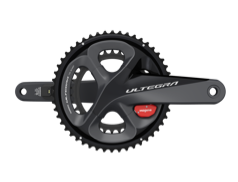How to use a heart rate monitor is not a complicated thing, just keep you in the correct heart rate range. However, how to train according to heart rate is not that simple.
Before you start your training, find out these numbers
There are many different ways to set up a heart rate training program, but they all apply the principle of “training in the heart rate zone”.
More often there are always some people who get started with cycling and like to show off how long they can keep their heart rate in a training session, but this is not scientific training. First, you need to measure your resting heart rate and maximum heart rate, and then set your heart rate interval so that those seemingly fragmented data can make sense.
Resting Heart Rate: the number of heartbeats per minute while you’re at rest, the normal resting heart rate for adults over the age of 10 years, including older adults, is between 60 and 100 beats per minute (bpm)
Maximum Heart Rate: You can calculate your maximum heart rate by subtracting your age from 220. When you know your maximum heart rate, you can calculate your heart rate zones and train at the right intensity.
There are many ways to find out your RHR AND MHR, and using a heart rate monitor is the easiest and most accurate way to get the right number.
About the heart rate intervals
After confirming these main data (maximum heart rate, resting heart rate), you can now calculate your heart rate interval. At present, many people tend to divide their heart rate into five sections, and the British Bicycle Coach Association divides it into six sections.
60%-65% maximum heart rate: it is suitable for long-distance low-intensity riding to promote fat burning;
65%-75% maximum heart rate: for the basic training interval, it is suitable for medium-intensity riding at a slightly longer distance;
75%-82% maximum heart rate: it is for medium distance, slightly higher intensity riding, promotes aerobic capacity and endurance improvement
82%-89% maximum heart rate: it is for simulating game rhythm and intensity
89%-94% maximum heart rate: it is for itt of 16-40 km, increasing the anaerobic threshold
94%-100% maximum heart rate: it is for high-intensity interval training to increase maximum output power and speed
Make your workout based on the heart rate intervals
Training with a heart rate monitor does not necessarily make you a world-class biker, but it will continue to make you more comprehensive.
Slow is fast, which sounds a little unbelievable, but this is the basic course of heart rate training. In the beginning, you will start cycling in the first and second intervals. Sometimes you will feel very slow, very boring, and very torturous, but for a while, the results will surprise you.
When riding slowly, it is very important to have a certain degree of self-discipline. Try to complete the slow riding course alone, so that there will be no temptation to catch up.
Main course: riding three hours with the heart rate staying in the second interval. Then, warm up in 15 minutes, then do 4-6 groups of 30 seconds full sprint, 4-5 minutes lighter to relax.
How to improve your endurance effectively
All you need to do is LSD. Do a 3-4-hour ride with heart rate staying in the second interval and a two-hour riding with HR staying in interval three every week, your endurance level will improve rapidly. On this basis, you can add some long intervals to help you make progress in endurance and speed more effectively. 3-4 hours in the second zone, 10-minute intervals per hour
Regular testing is important
As you become stronger, your heart and lung function will become stronger as well, so you can do more with the same intensity. In other words, at a predetermined heart rate, you will spend less time riding a predetermined distance.
Regular testing can expose any level of decline while detecting whether you are training excessively and potentially ill. Choose a route that takes 30 minutes to ride, warm-up, ride at a certain heart rate, and time yourself. It is best to choose a heart rate in your basic training interval and keep it, whether it is in this test or the future retest, to keep the same heart rate range riding. This aerobic intensity is generally 65-75% of your maximum heart rate.







